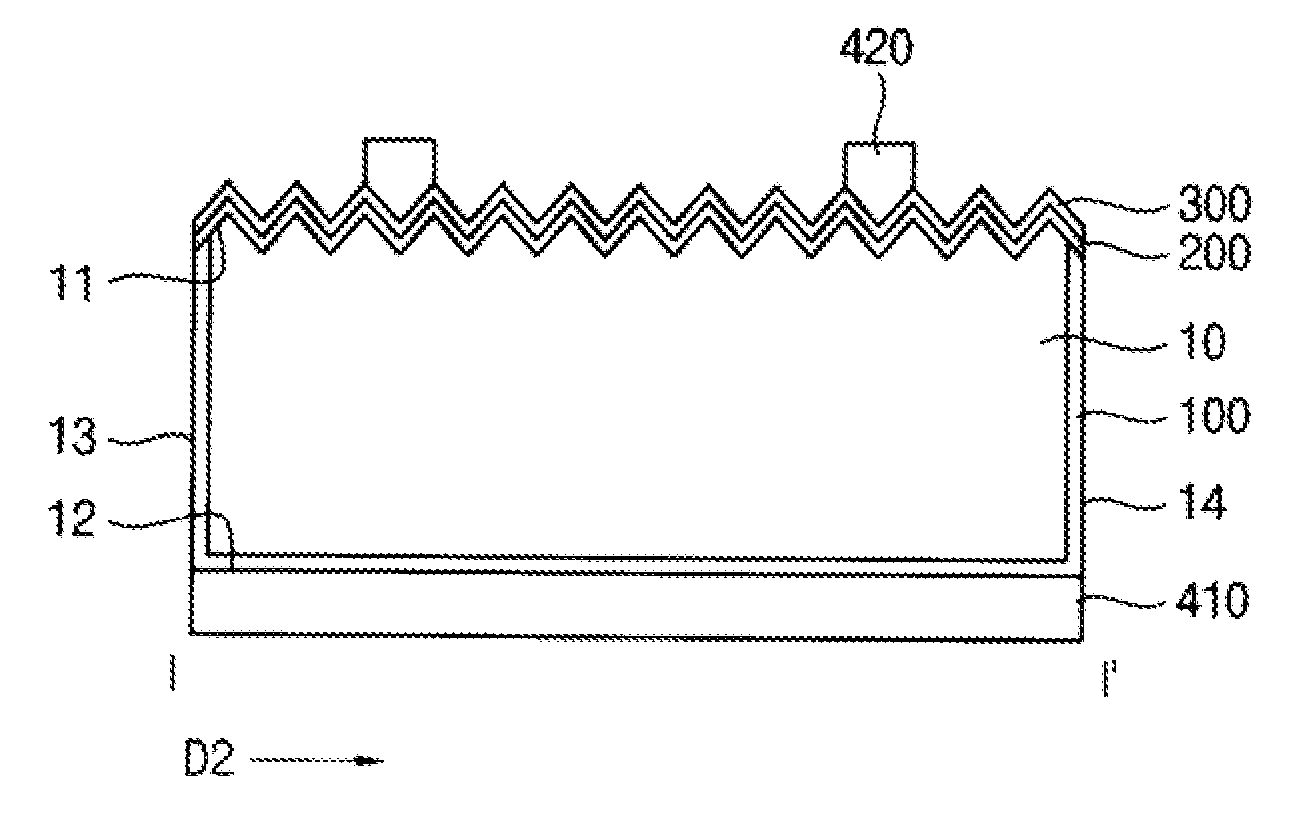Solar cell and method of manufacturing the same
a solar cell and manufacturing method technology, applied in the field of solar cells, can solve the problems of high incident light reflectivity, low terminal voltage, and affecting the quality of solar cells, so as to reduce or minimize the incident light reflectivity, prevent warping of the wafer, and simplify the manufacturing process
- Summary
- Abstract
- Description
- Claims
- Application Information
AI Technical Summary
Benefits of technology
Problems solved by technology
Method used
Image
Examples
Embodiment Construction
[0038]Hereinafter, embodiments of the present invention will be explained in detail with reference to the accompanying drawings.
[0039]FIG. 1 is a perspective view illustrating a solar cell according to an example embodiment of the present invention. FIG. 2 is a cross-sectional view taken along a line I-I′ in FIG. 1.
[0040]Referring to FIGS. 1 and 2, the solar cell 1 according to the present example embodiment includes a base substrate 10, a first doped layer 100, a second doped layer 200, a transparent conductive layer 300, a first electrode 410 and a second electrode 420.
[0041]The base substrate 10 includes a first surface 11 into which sunlight is incident, a second surface 12 opposite to the first surface 11, a third surface 13 connecting the first surface 11 with the second surface 12, and a fourth surface 14 opposite to the third surface 13. The base substrate 10 may be an n-type crystalline silicon substrate. For example, the base substrate 10 includes an element in Group V, su...
PUM
 Login to View More
Login to View More Abstract
Description
Claims
Application Information
 Login to View More
Login to View More - R&D
- Intellectual Property
- Life Sciences
- Materials
- Tech Scout
- Unparalleled Data Quality
- Higher Quality Content
- 60% Fewer Hallucinations
Browse by: Latest US Patents, China's latest patents, Technical Efficacy Thesaurus, Application Domain, Technology Topic, Popular Technical Reports.
© 2025 PatSnap. All rights reserved.Legal|Privacy policy|Modern Slavery Act Transparency Statement|Sitemap|About US| Contact US: help@patsnap.com



